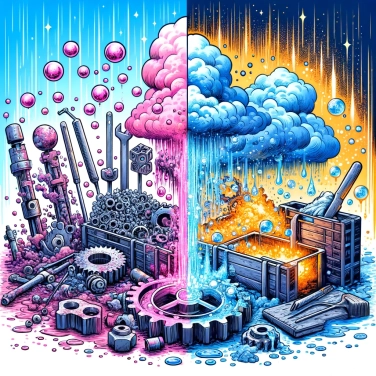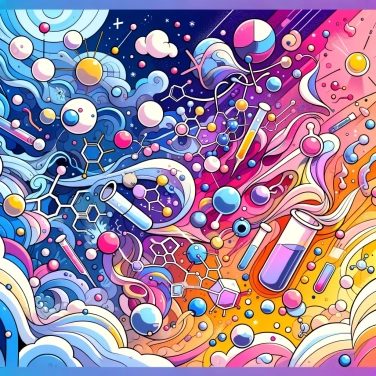Metal rusts when exposed to moisture due to a chemical reaction called oxidation. Water and oxygen from the air react with the metal, forming metal oxide, commonly known as rust.

When metal, particularly iron, comes into contact with oxygen in the presence of water, it simply starts a chemical reaction called oxidation. Basically, iron likes to combine its energy with oxygen, losing some particles called electrons, which leads to the formation of iron oxide: that’s exactly what rust is! Water greatly accelerates this process by making the metal-oxygen mixture much more reactive, thus facilitating a rapid exchange of electrons. The result: a metal that transitions from a nice shiny state to an orange, flaky surface.
Rust is a kind of natural mini battery created directly on the surface of metals. When you have a piece of iron exposed to moisture, certain areas of the metal become small negative poles (called anodic zones). There, the metal loses electrons; it is literally having its charged particles stolen, which causes it to transform into ions (ferrous), ready to react further.
Other parts of the metal serve as positive poles (called cathodic zones), where the previously stolen electrons regroup with the oxygen and water present all around to form hydroxide ions. It is the meeting between these new hydroxide ions and the freshly formed iron ions that gives rise to the famous rust (iron oxide). All of this is a discreet but very common electrochemical ballet that gradually eats away at your piece of iron if you do nothing about it.
Humidity is essential for the formation of rust, as it acts as an electrolyte. Basically, water never remains pure: it contains dissolved minerals and impurities, which allow it to conduct electricity by facilitating the movement of electrons between two different areas on the metal's surface. This is exactly what is needed to trigger the corrosion reaction: electrons flow smoothly through the water charged with dissolved salts, significantly accelerating the chemical reaction in which iron loses electrons and gradually transforms into rust. Without this conductive humidity, electrons would struggle to circulate, and the reaction would therefore be much slower, if not almost nonexistent.
Rust significantly worsens when metal is exposed to certain environmental conditions. For example, marine air containing salt greatly accelerates corrosion by facilitating the movement of charged particles. The same applies to polluted urban areas, as certain pollutants like sulfur dioxide or chlorides intensify the wear rate by directly attacking the metal surface. Exposure to high temperatures can also worsen the phenomenon, as heat accelerates most chemical reactions. Finally, cracks, scratches, or any damage to the metal surface facilitate the penetration of moisture and further accelerate the formation of rust.
Rust can significantly increase the initial volume of the metal: a layer of rust can take up to seven times more space than the original metal!
To protect metals from rust, the galvanization process is often used, which involves depositing a thin protective layer of zinc on their surface.
Submerged metal wrecks, such as sunken ships, rust much more slowly at depth due to the low amount of available oxygen in the deep ocean.
The famous Golden Gate Bridge in San Francisco is continuously painted to prevent corrosion: each new layer of paint acts as a barrier between the steel and the surrounding moisture.
The presence of salt (such as seawater or de-icing salt) increases the conductivity of water and acts as an electrolyte, thereby accelerating the electrochemical reaction responsible for corrosion and rust.
Yes, you can eliminate superficial rust using various methods, such as manual sanding, rust-inhibiting chemicals, or electrolysis. However, it is important to treat or protect the metal afterward to prevent rust from returning.
No, not all metals rust in the strict sense. Rust primarily refers to steel and iron. Other metals, such as aluminum or copper, develop oxides that form a protective layer, preventing deeper corrosion.
You can protect metal objects from rust by using protective coatings (paint, varnish, galvanization), keeping them dry and sheltered from moisture, or by using specialized corrosion inhibitors.
Oxidation is a general term that refers to the chemical reaction of an element with oxygen. Rust is a more specific case of oxidation that specifically pertains to ferrous metals (iron and steel) and creates a porous, brittle iron oxide with a characteristic rust color.

No one has answered this quiz yet, be the first!' :-)
Question 1/5